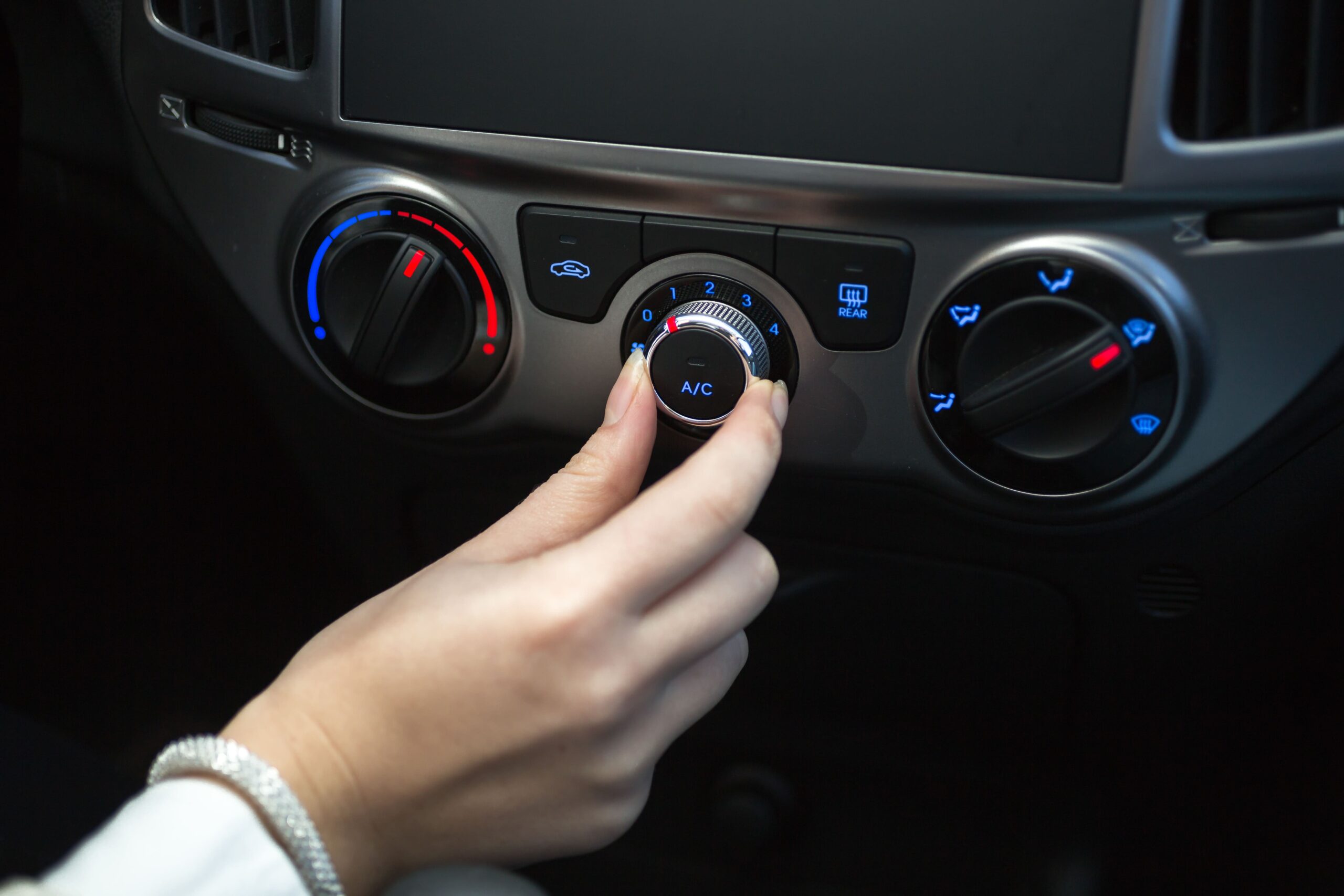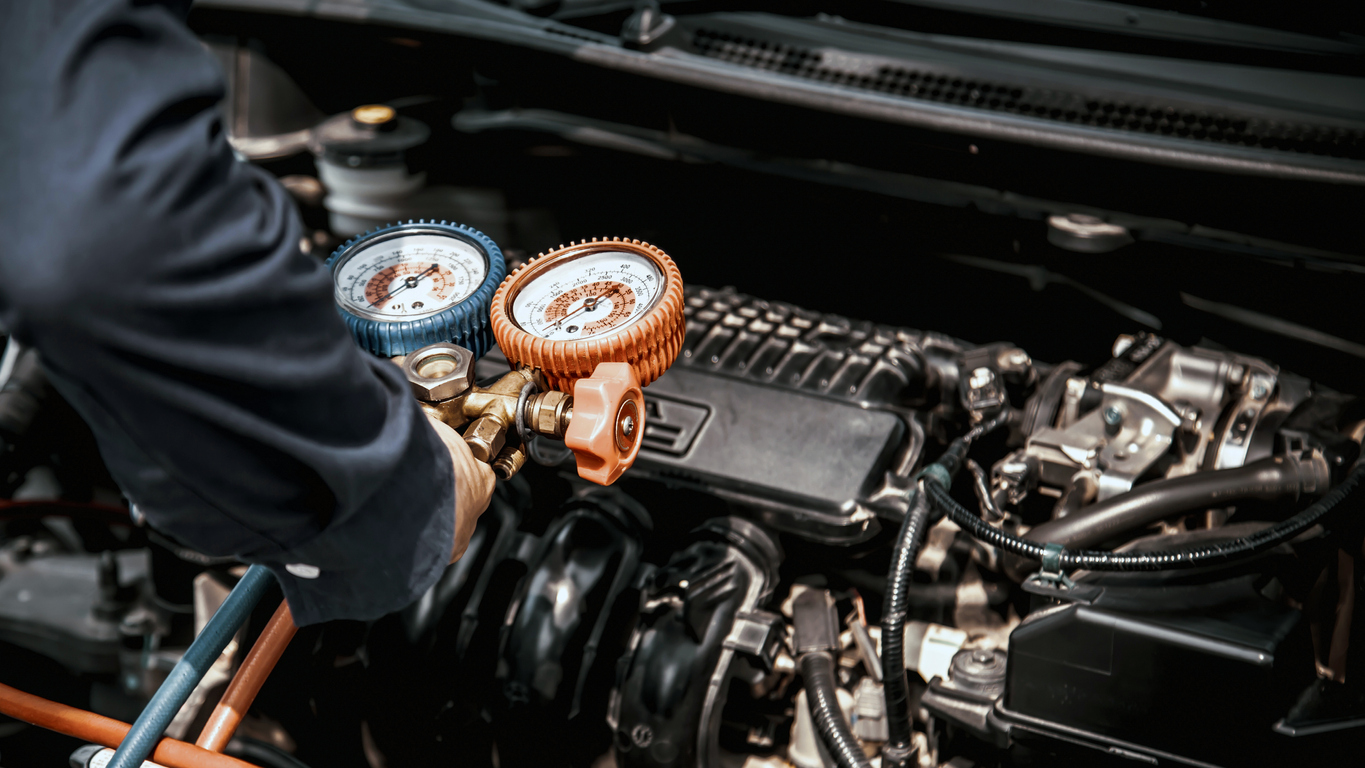Recent Blog
-
CCD Alignment Systems VS. 3D Alignment Systems
2025-04-08 -
What are the main differences between 2D and 3D wheel alignment systems
2025-03-26 -
Is Touchless Wheel Alignment Right for You? Factors to Consider
2025-03-19 -
The Future of Automotive Service: Exploring Touchless Wheel Alignment Technology
2025-03-13
Why Your Car A/C Isn’t Working & How To Fix It
Having a properly functioning car air conditioning (A/C) system is essential for a comfortable and enjoyable driving experience, especially during the hot summer months. However, there are times when your A/C may fail to work, leaving you frustrated and sweaty behind the wheel. In this article, we will explore the common reasons why your car’s A/C system may stop working and provide guidance on how to fix it.
Common Problems of Car A/C Repair
Repairing a car’s air conditioning (A/C) system can be a challenging task, especially if you’re not familiar with the intricacies of automotive HVAC systems. Here are some common problems that arise during car A/C repairs:
- Refrigerant leaks: Refrigerant leaks are a prevalent issue in A/C systems. Leaks can occur due to damaged hoses, fittings, O-rings, or seals. Detecting and fixing leaks requires specialized tools and equipment, as well as knowledge of refrigerant handling and disposal procedures.
- Electrical issues: A/C systems rely on electrical components such as fuses, relays, switches, and wiring harnesses. Electrical problems can arise from blown fuses, faulty relays, loose or corroded connections, or damaged wiring. Diagnosing and resolving electrical issues often requires expertise in automotive electrical systems.
- Compressor failure: The compressor is the heart of the A/C system, responsible for pressurizing and circulating refrigerant. Compressor failures can occur due to mechanical issues, electrical faults, or refrigerant contamination. Replacing a compressor is a complex task that requires specialized tools and knowledge.
- Clogged condenser or evaporator: Over time, dirt, debris, and contaminants can accumulate on the condenser and evaporator coils, hindering heat exchange and reducing cooling efficiency. Cleaning or replacing these components may be necessary to restore proper A/C functionality.
- Faulty blower motor: The blower motor is responsible for circulating air through the A/C system and into the cabin. If the blower motor fails, airflow may be weak or non-existent. Replacing a faulty blower motor usually involves accessing it within the HVAC system, which can be a labor-intensive process.
- Expansion valve issues: The expansion valve regulates the flow of refrigerant into the evaporator coil, controlling the cooling process. Problems with the expansion valve can lead to inadequate cooling or uneven temperature distribution. Replacing or adjusting the expansion valve may be necessary to address such issues.
- Sensor malfunctions: A/C systems utilize various sensors to monitor temperature, pressure, and humidity. Malfunctioning sensors can disrupt the proper operation of the A/C system, leading to inconsistent cooling or incorrect climate control. Troubleshooting and replacing faulty sensors require diagnostic equipment and knowledge of sensor functions.
- Belt and pulley problems: The A/C system is driven by a belt connected to the engine’s crankshaft. Over time, belts can wear out or become loose, affecting the performance of the A/C compressor. Damaged pulleys can also cause belt slippage and reduce compressor efficiency. Replacing worn-out belts and damaged pulleys is essential for proper A/C operation.
- System contamination: Contaminants such as moisture, debris, or foreign substances can enter the A/C system, affecting its performance and causing damage to components. Flushing and cleaning the A/C system, as well as using appropriate refrigerant and lubricant, are crucial to prevent contamination-related issues.
- Improper refrigerant charging: Incorrectly charging the A/C system with refrigerant can result in inadequate cooling or compressor damage. It is important to follow manufacturer guidelines and use proper equipment to ensure the correct refrigerant charge.
When faced with A/C repairs, it is often advisable to consult a professional mechanic or an automotive A/C specialist who has the expertise and tools to diagnose and resolve these common problems effectively.
Reasons for A/C System Failure
- Refrigerant leaks: One of the primary reasons for A/C failure is refrigerant leaks. Signs of leaks include reduced cooling performance and hissing sounds near A/C components. Leaks can be caused by damaged hoses, fittings, or seals. Repair options include locating and fixing the leaks, followed by recharging the refrigerant.
- Compressor issues: The compressor plays a crucial role in the A/C system by pressurizing the refrigerant. Symptoms of compressor failure include no cold air or strange noises when the A/C is turned on. Common causes of compressor issues include electrical problems, refrigerant contamination, or mechanical failure. Repairing or replacing the compressor may be necessary, depending on the extent of the damage.
- Electrical problems: A malfunctioning A/C system can also be attributed to electrical issues. Blown fuses or faulty relays can disrupt the flow of power to the A/C components, leading to a lack of cooling. Careful inspection of fuses, relays, and wiring connections is necessary to identify and resolve these problems.
- Clogged condenser or evaporator: Over time, debris and dirt can accumulate on the condenser and evaporator, impeding the proper flow of refrigerant and heat exchange. This can result in reduced cooling efficiency. Cleaning or replacing the affected component is often required to restore optimal A/C performance.
- Fan or blower motor problems: If you notice weak airflow from the vents or no air at all, it may indicate issues with the fan or blower motor. Faulty motors, worn-out bearings, or damaged fan blades can all contribute to poor ventilation. Depending on the problem, repairs or replacements may be necessary.
Car A/C Repair Safety
Car A/C repair can involve working with refrigerant, electrical components, and various mechanical parts. Safety should always be a top priority when performing any repairs or maintenance on the A/C system. Here are some important safety considerations to keep in mind:
- Protective Gear: Always wear appropriate personal protective equipment (PPE) when working on the A/C system. This may include safety glasses or goggles, gloves, and even a face mask to protect against refrigerant or debris.
- Proper Ventilation: Ensure that you are working in a well-ventilated area to avoid inhaling any potentially harmful gases or fumes. If you’re working indoors, use fans or open windows to improve airflow.
- Refrigerant Handling: Refrigerant can be harmful if mishandled. Follow proper procedures for refrigerant recovery, recycling, and disposal. Avoid direct contact with refrigerant and never release it into the atmosphere, as it contributes to ozone depletion and is illegal in many jurisdictions.
- Electrical Safety: When working with electrical components, disconnect the battery or ensure the vehicle’s electrical systems are turned off to prevent any accidental electrical shocks. Be cautious when handling wires and connectors, and avoid touching exposed electrical connections with bare hands.
- Jack and Support Stands: If you need to access components underneath the vehicle, use appropriate jacks and support stands to lift and secure the car. Follow proper lifting and support procedures outlined in the vehicle’s owner’s manual.
- Follow Manufacturer Guidelines: Adhere to the manufacturer’s guidelines, service manuals, and repair procedures specific to your vehicle’s make and model. This ensures you’re following recommended safety practices and using the correct tools and procedures for the repairs.
- System Pressure Release: Before working on the A/C system, it is crucial to release the system pressure. This can be done using a pressure relief valve or by slowly and carefully loosening a fitting while wearing appropriate protective gear. Never remove fittings or components abruptly as it can cause sudden release of pressure.
- Read and Understand Instructions: Familiarize yourself with repair instructions, diagrams, and any warnings provided in the service manual or repair guides before attempting any repairs. Understanding the steps involved and the potential risks will help you work more safely.
- Seek Professional Assistance: If you are unsure about any aspect of A/C repair or lack the necessary tools and experience, it is recommended to seek professional assistance. Professional technicians have the expertise and equipment to handle repairs safely and effectively.
Remember, safety should always be your priority when working on your car’s A/C system. If you are unsure about any procedure or if the repair seems beyond your capabilities, consult a qualified professional who can ensure the job is done safely and correctly.
How to Fix Car A/C System
Fixing a car A/C system with a GATmatic AC service machine can be an efficient and effective way to diagnose and address issues. Here’s a general guide on how to use a GATmatic AC service machine to fix a car’s A/C system:
- Preparation:
- Familiarize yourself with the GATmatic AC service machine by reading the instructions and user manual.
- Ensure that the car’s engine is turned off and the A/C system is not running.
- Put on the appropriate personal protective equipment (PPE), such as safety glasses and gloves, to ensure safety during the process.
- Connect the GATmatic AC service machine:
- Locate the A/C service ports on the car. The high-pressure port is usually located on the smaller diameter line and the low-pressure port on the larger diameter line.
- Connect the service hoses from the GATmatic AC service machine to the corresponding high and low-pressure ports on the car’s A/C system. Ensure a secure connection by tightening the hose fittings.
- Evacuate the system:
- Turn on the GATmatic AC service machine and set it to evacuation mode.
- Follow the machine’s instructions to start the evacuation process. The machine will remove any remaining refrigerant, moisture, and air from the A/C system. This step is crucial before recharging the system.
- Leak detection:
- Once the evacuation process is complete, switch the GATmatic AC service machine to the leak detection mode.
- Use the machine’s leak detection feature to identify any refrigerant leaks in the A/C system. Follow the machine’s instructions for accurate detection. Pay close attention to connections, hoses, and components.
- Recover remaining refrigerant (if necessary):
- If there is still refrigerant in the A/C system after the evacuation, use the GATmatic AC service machine to recover it. This process ensures proper disposal and prevents environmental contamination.
- Recharge the A/C system:
- Switch the GATmatic AC service machine to the recharge mode.
- Follow the machine’s instructions to select the appropriate refrigerant type and quantity for the car’s A/C system. The machine will guide you through the process of injecting the correct amount of refrigerant into the system.
- System performance verification:
- After the recharge, the GATmatic AC service machine may provide options to check the performance of the A/C system. Follow the machine’s instructions to assess the cooling efficiency and verify that the system is functioning correctly.
- Disconnect the GATmatic AC service machine:
- Once the necessary repairs and maintenance are completed, safely disconnect the GATmatic AC service machine from the car’s A/C system. Follow the machine’s instructions to release any remaining pressure and disconnect the service hoses properly.
It is important to note that using a GATmatic AC service machine requires proper training and knowledge of automotive A/C systems. If you are not confident or experienced in using the machine, it is advisable to seek professional assistance (WhatsApp +86 186 6438 1626) from an automotive technician who is familiar with A/C repairs and has access to the necessary equipment.
Conclusion
The GATmatic AC service machine offers a convenient and efficient solution for fixing car A/C systems. When used correctly, it can help identify and address common A/C problems, enabling you to enjoy a comfortable driving experience once again. Whether you choose to use the GATmatic AC service machine yourself or seek professional help, the ultimate goal is to ensure the safe and proper functioning of your car’s A/C system for optimal comfort on the road.
Describe Your Needs In Detail!
We will carefully evaluate your needs and give professional solutions.




